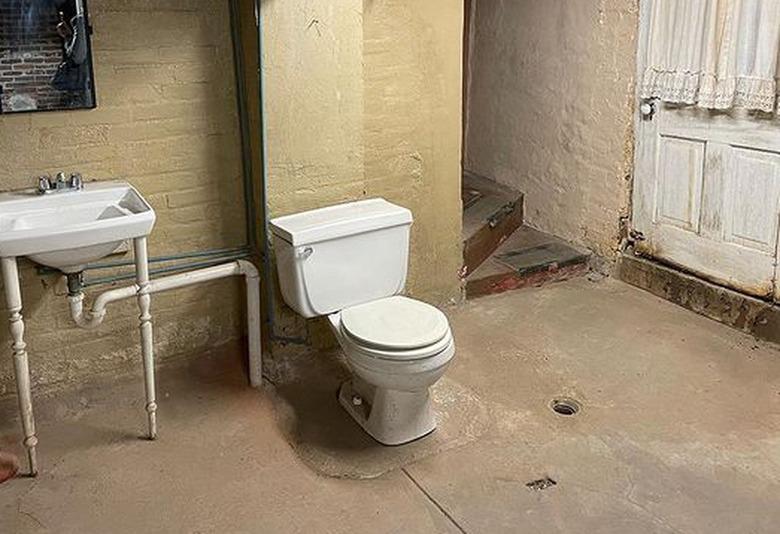Why Do Old Houses Have An Open Toilet In The Basement?
If you've ever explored an old house, you know how eventful it can be. On one hand, they're full of character, charm, and potential. On the other hand, they can be super creepy — especially when it comes to the basement.
Case in point: Many old houses have a lone, open toilet in the basement. It's described as an "open" toilet because it has no walls or dividers for privacy. What's more, some open basement toilets are in the corner, while others are right in the middle of the room. Who knew random toilets could be so strange?
Well, you might be surprised to learn that these lone toilets have a nickname: Pittsburgh potties. They're also common in pre-World War II houses, according to Gerald Carpenter, professional plumber and founder of Sanitary Review. And while there are many legends about the weird fixtures, the real reason for installing them was to solve backup issues, says Carpenter.
Basically, the city populations were growing rapidly, and "the old plumbing couldn't deal with the rapidly increasing volume of liquid," explains Carpenter. This would lead to backups, causing sewage masses from pipes to come up and spill over the toilets and bathtubs. (Yuck.) So, "Pittsburgh potties were installed in the basements to prevent spillage in the main living space," Carpenter tells Hunker. "It was the best way to avoid sewage backups from flooding the clean living areas of the house."
That's not all, though. According to Carpenter, "There's also a common belief that these toilets were used by miners and steel factory workers, who preferred to enter their houses from the basement." Here, they could use the basement toilet (and wash in the basement shower) before entering the cleaner parts of the home. It makes a lot of sense, to be honest.
However, despite their name, Pittsburgh potties aren't only found in Pittsburgh, Pennsylvania. For example, in one Reddit thread, users have reported finding open basement toilets in several states, including Colorado, Ohio, and Michigan. (Writer's note: They're also found in old houses in the Hudson Valley region of New York, where hundreds of factories once thrived.)
The next time you find a random toilet in a basement, you'll know exactly why it's there. Now, whether or not you'll actually use it ... that's another story.

